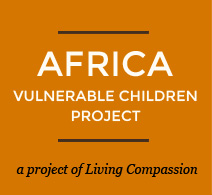We are greeted by singing again this morning when we arrive in Kantolomba. The cheerful strains of “What’s your name...?” are coming from Veronica’s classroom. We catch some video footage this time!
The person in the middle of the circle chooses someone to introduce themselves to. They ask them in song, “What’s your name? Nice to meet you!” Then the person who has been picked takes their place in the middle of the circle, and on it goes! We love the way that, with all of this movement and interaction and play, the phrases come to life. It’s not an abstract chant; it’s a meaningful phrase that people want to use so they can interact with one another in English. Exactly what we are going for!
The preschool team continues on. Today we were nearly a one-to-one ratio, children to grown-ups with all the teachers training with Phil. Veronica taught a practice lesson, and Beatrice, Susan and Georgina were all just part of the class. Veronica called on them to answer right along with the other children. The students got a kick out of that!
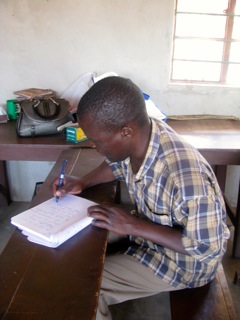
“Please could you repeat the instructions?” Charles compiles a list of helpful English phrases for teachers and students to use in the classroom. Look out for them coming to a Kantolomba classroom wall in poster form soon!
In our session with Charles this morning, we start by talking about what the process of learning a language is like—not what some textbooks and lessons assume it is like, but what it’s actually like in our experience. We talk about how it’s not like building a building—getting one level, or one rule, perfect and mastered and then moving on to the next level—it’s much more like looking after a garden, with some parts growing at different paces and in different ways. And when we make a “mistake,” with grammar for example, it’s a good sign! It’s a sign that the language we know is expanding, that the system is taking in more information. And as it expands, things get wobbly and we make “mistakes” with things we thought we “knew” before it settles back down again. We look at the practical application for this in the classroom—how and when to correct errors in a way that supports learning.
The momentum has reached an exciting point, where it feels like the parts of the project we are working on support and energize one another. In the preschool English classroom, the team noticed pronunciation patterns that made what was being said difficult to understand. So when we gathered together for our next session, the grown-ups’ English class, the first thing we did was have a mini-workshop in these pronunciation points! “Pray” and “play” is a common one; the “r” is often pronounced as an “l.’’ So we made up a game: we come up with a hand signal to indicate pray and one to indicate play. First, Anna and Jen say one of the words (play or pray), and the Bemba team indicates which word they thought they heard using our groovy hand signals. Then the other way around—the Bemba team says a word, and Anna and Jen indicate with the hand signals whether they were able to understand. The “r” sound got clearer and clearer as we went. Who needs text books?!
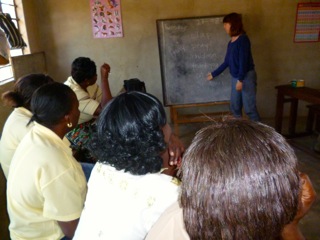
Anna underlines a point.
For the rest of our session together, we have a discussion about the article we read yesterday about the young Indian man, Babur, who set up a school in his local community to teach young people who could not afford to go to the fee-paying school he attended. Charles teaches the exercises that he himself did as a student last week. This is GREAT fun!
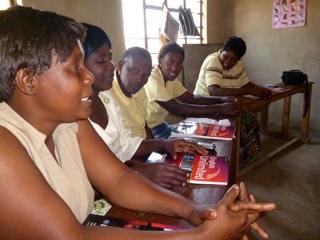
When the question about what motivates Babur comes up, Georgina finds a beautiful way to express what motivation is: “encouragement inside.” We might steal that one for R/L practice with the mentor.
Charles looks at Babur’s long days of service—getting up to go to school, and then returning to his community to teach. “He never got tired,” points out Charles. “Why? Love.”
It is truly exciting to watch the team in action. Today we saw curiosity and inquiry about English spark and take off in a whole new way. Someone asked about the verb “to implement,” and from there someone noticed that there’s also the noun “implement,” like a farm implement. And, hang on, what about “implementation”? There’s definitely action in that word, but it’s not a verb because we can’t put “to” in front of it. So the way we use it is.... It felt like watching hands picking up puzzle pieces, turning them around to work out their size and shape and seeing how they all fit together. Wow. Did we mention this is fun?
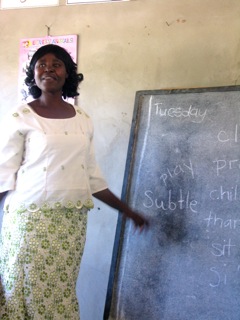
Beatrice reminds the team about the meaning of a new word we looked at a couple of days ago: subtle. Explaining what “subtle” means is subtle work!
After lunch, we met the young women again for another reading session. Today for the first time, they were starting to communicate in small ways in English, not just while reading. This is huge.
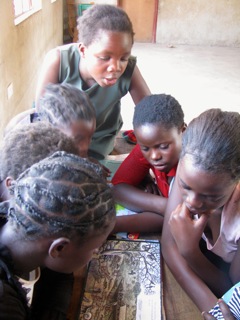
“Which book would you like to read today?”
“This one.”
We have been casually throwing into the reading sessions some of the Bemba words we have learned (no big deal, you know, we’re very cool about it). The girls laugh hysterically every time a Bemba word comes out of a musungu’s mouth, but we can tell we’re slowly building up a bit of credibility with them. Now they’re even willing to join in with our very uncool games. We’ve got a hand signal going that means “pause” when we come to a full stop, and we point at things when we come to the words for them in the stories we’re reading: window, door, hill. It is a raucous good time.
After our lively reading session with the young women, we go outside to spend a quiet moment with the chickens.
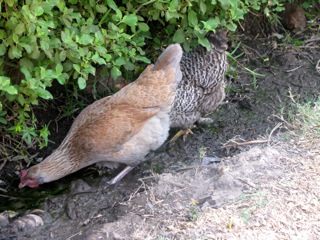
All of Life benefits from the clean water at the Living Compassion property. The chickens drink from the tap run-off water.
Out in the early afternoon sun, we get to take in the beauty of the Living Compassion property on a whole new level. New details open up to us as we look around.

...the signs of traffic on the path up to the preschool building: big human feet, little human feet, big chicken feet, little chicken feet - all walking together!
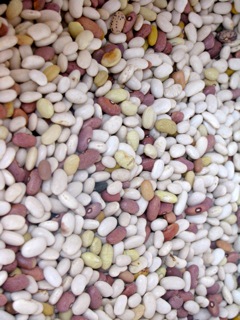

...the perfection and abundance of all of Life right here in the multicolored beans...

...the magnificent fan formation of the bark...

...the beautifully carved detail around the windows...
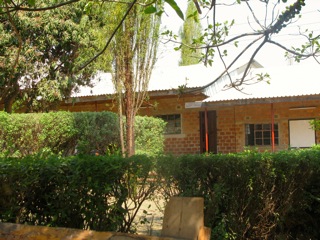
...all the layers of green...
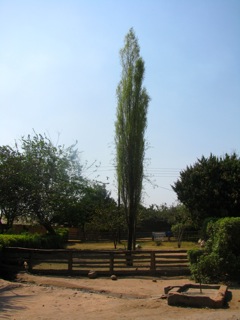
...this stunning tree right in the middle of it all, soft and willowy and straight and sturdy all at the same time (another hero - a great model)...
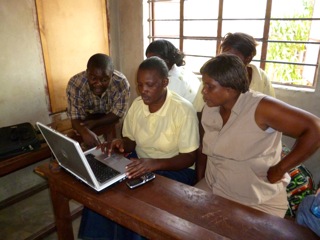
After lunch, we gather together for another internet session. Today, the team decides to use the internet to search for health information—blood pressure. A number of folks on the team have this as a health concern.
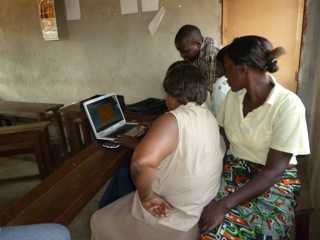
We end the day with a few more portraits. Can you see the resemblance here:
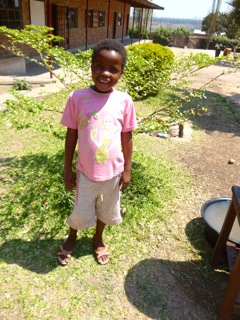
Marion, Josephine’s oldest child, 11.

Cheri, Joesphine’s second child, 5.
